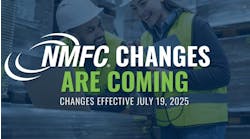During the markup of the surface transportation reauthorization bill, the House of Representatives added an amendment to require truck owners to carry $2 million of insurance coverage. This is up from the $750,000 required today.
Their argument is that the current liability requirement is inadequate to compensate victims of truck accidents. Opponents are concerned that it will force small carriers out of business.
Objectively, when a commercial motor vehicle is involved in an accident, there is usually more damage to property and more significant injuries to people than in a collision involving two passenger cars. On top of that, the cost to repair damaged automobiles has risen as have vehicle replacement costs. Medical costs following an accident have also risen as a result of the general increase in the cost of medical care.
The increased insurance limit provides more coverage to the carrier thereby protecting its assets, even though that added protection comes with a bigger price tag.
I can't help but wonder if this amendment is in reaction to some of the insurance verdicts we have seen recently. They have reached nuclear levels forcing more and more insurance companies out of the auto liability space. The firms that have remained are not willing to deploy increased umbrella limits which would provide the limits to the proposed $2 million level.
While we can write to our members of Congress to let them know our feelings on this increased insurance limit, if the bill passes with the amendment intact, we will have to comply.
Compliance is likely to come with a significant price increase. While we may not be able to control the cost of insurance, we do have some control over the safety of our trucks and drivers. Spec’ing safety technologies on trucks along with teaching and reinforcing safe driving practices can limit the number of accidents we have and that can help contain cost increases. More importantly fewer accidents helps our fleets’ image but also improve the overall image of the trucking industry. When that happens, we become less of a target for regulators.



